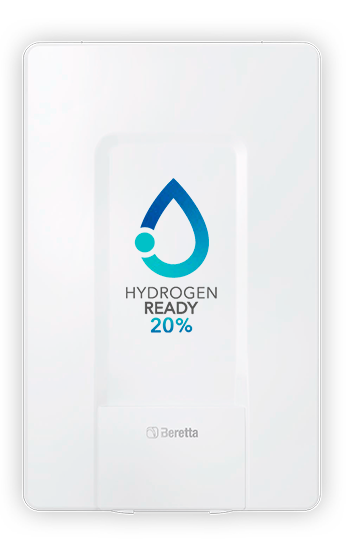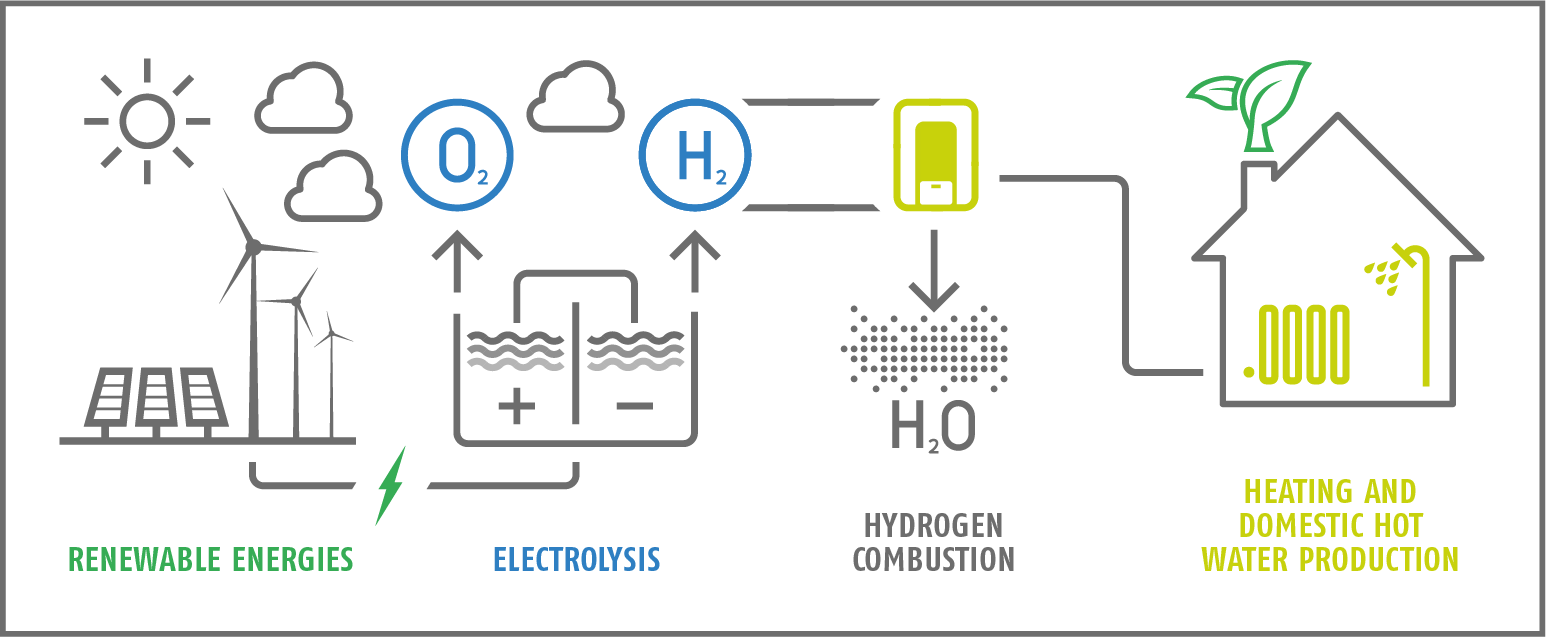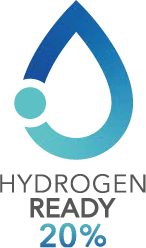THE EUROPEAN GREEN DEAL & HYDROGEN: THE ROADMAP TOWARDS NET ZERO
In a global scenario characterised by an increasing focus on climate change and eco-friendly technologies, hydrogen (H2) is becoming more and more established as a valid sustainable alternative for the energy transition; indeed, it even features among the European Commission's green strategies. In the communication “A hydrogen strategy for a climate-neutral Europe”, this element is highlighted as the ideal solution in order to respond to the need to reduce carbon footprint emissions.
The residential heating sector in particular – as revealed in the latest report by ISPRA (- Istituto Superiore per la Protezione e la Ricerca Ambientale, or the Higher Institute for Environmental Protection and Research) – is responsible for around 60%* of the total CO2 emissions into the atmosphere. As such, decarbonisation remains one of the biggest challenges in the European Union's long-term strategy, which, with its Green Deal, aims to achieve a modern, competitive and climate-neutral economy by 2050.

A challenging programme which has its sights set on the ambitious goal of implementing a new energy policy that can deliver full environmental sustainability. This philosophy is fully shared by the current Italian Government; the establishment of a dedicated Ministry of Ecological Transition and the revision of the National Recovery and Resilience Plan for Italy make this roadmap a crucial component in the country's post-Covid recovery.

“Increasing the energy efficiency of homes is one of the most important areas in which change can be rapidly achieved, in order to make our houses healthy, comfortable and above all greener. However, this still remains a highly complex area with regard to the energy transition.” comments Riccardo Rompani, Residential Product Marketing Manager & Trade Associations Manager for Beretta, before adding: “Investing in a technology such as hydrogen means investing in the future of the planet, even if, as it currently stands, hydrogen still only represents a small portion of the global energy mix, which is largely made up of fossil fuels.
In this regard, a host of interesting and unprecedented opportunities are emerging, driven above all by the growing public focus on sustainable innovation.” He concludes: However, in order to get to the point where we have a power supply that is 100% based on hydrogen, a number of critical issues must first be tackled, linked to the impact that the widespread adoption of this new technology will have on the country's infrastructure.”
Green hydrogen: much more than a natural gas - an eco-friendly choice.
Colourless, odourless and tasteless, hydrogen (H2) can be burned without producing waste products such as carbon dioxide, dust and unburnt substances, and as such, it is a more environmentally-friendly choice than traditional fossil fuels.
Currently, there are three types of hydrogen - Grey, Blue or Green - obtained using different production processes, which also determine the level of purity. The current focus is on green hydrogen in particular; according to the EU Hydrogen Roadmap, this element will meet up to a quarter of total energy demand by 2050, thanks to its many advantages. It is obtained via a process of reverse electrolysis, powered by water and electricity from renewable sources; this process only releases water vapour into the atmosphere, and as such, has no impact on the environment.
“Furthermore, hydrogen is an energy carrier with great potential, and can be transported through the existing gas network.” comments Rompani, who continues: “It is already in use in the UK and the Netherlands, where a number of significant pilot projects are underway in residential settings; these projects are set to result in the large-scale installation of boilers that are 100% hydrogen powered within a few years. Germany has also decided to go down this road, with a nationwide investment plan.”
What are the prospects for hydrogen in Italy?
“Italy could represent an extremely promising market for the development of hydrogen-based solutions, above all thanks to the widespread presence of renewable energy sources and an expansive gas transportation network.” emphasises Rompani.
These two determining factors will help to ensure the diffusion of power-to-gas technologies that are able to store the surplus electricity produced by solar, wind or hydroelectric power stations in the form of methane or hydrogen, in order to reuse this as a buffer that can be utilised to cover peaks in electricity demand.
“Despite the great potential in Italy, the country is still hindered by a number of major limitations, which are preventing the full development of this technology,” continues Rompani, adding: “As experts in the sector, we believe that it is necessary to aim for a gradual energy transition, which is in line with the European Commission's objectives but which is also sustainable from a technological perspective: in other words, this must be a process that takes both the existing infrastructure and the costs to the consumer into consideration.”
A development plan that is also supported by the Italian Ministry of Economic Development (MISE), which estimates that an investment of around 10 billion euros will be necessary between 2020 and 2030, in order to create hydrogen-based technologies.

Affordability, transportation and safety: the challenges of hydrogen as one of the sustainable energy sources of the future
Expensive to produce, difficult to transport, safety issues: these are the key reasons that currently stand in the way of the rapid spread of hydrogen-based solutions in Italy. Furthermore, hydrogen is lighter than natural gas, and is extremely volatile: it is therefore more complex to store it, both at the distribution stage and ahead of consumption.
Accordingly, the transportation and distribution network must be modernised, in order to ensure that it is suitable for carrying 100% hydrogen: these operations represent the biggest cost.
The European Hydrogen Backbone (EHB) recently presented a new analysis which focused on the supply, demand and transportation of hydrogen in Europe, which is accompanied by a map identifying a network of around 40,000 km that could be in operation by 2040, linking 19 Member States, Switzerland and the UK. Finally, it highlights the fact that natural gas pipelines are actually the most competitive option in economical terms, even when compared to power lines, and without taking into account the costs associated with flexibility, such as those required for storage.
Beretta's green offering for the heating solutions of the future.
From the Research & Development laboratories of Beretta comes a range of new-generation condensing boilers which are increasingly advanced in terms of efficiency, functionality and performance, and can ensure perfect comfort in the home with a low environmental impact. This range has been specifically designed to operate with mixtures of natural gas and hydrogen, with the latter composing up to a maximum of 20%.

“The long-term goal for Beretta with regard to Research & Development is to produce a series of boilers that are powered 100% by hydrogen,” continues Rompani, concluding: “This targeted development strategy, which reflects the Group's values, has been conceived with a view to anticipating the great changes that are currently taking place,through a comprehensive hydrogen-ready offer, created in order to satisfy any plant requirement in the residential heating sector, bringing technological excellence, sustainability, comfort and energy savings into the homes of millions of Italians.”
10/11/2021
